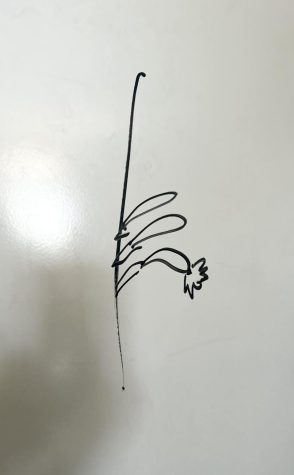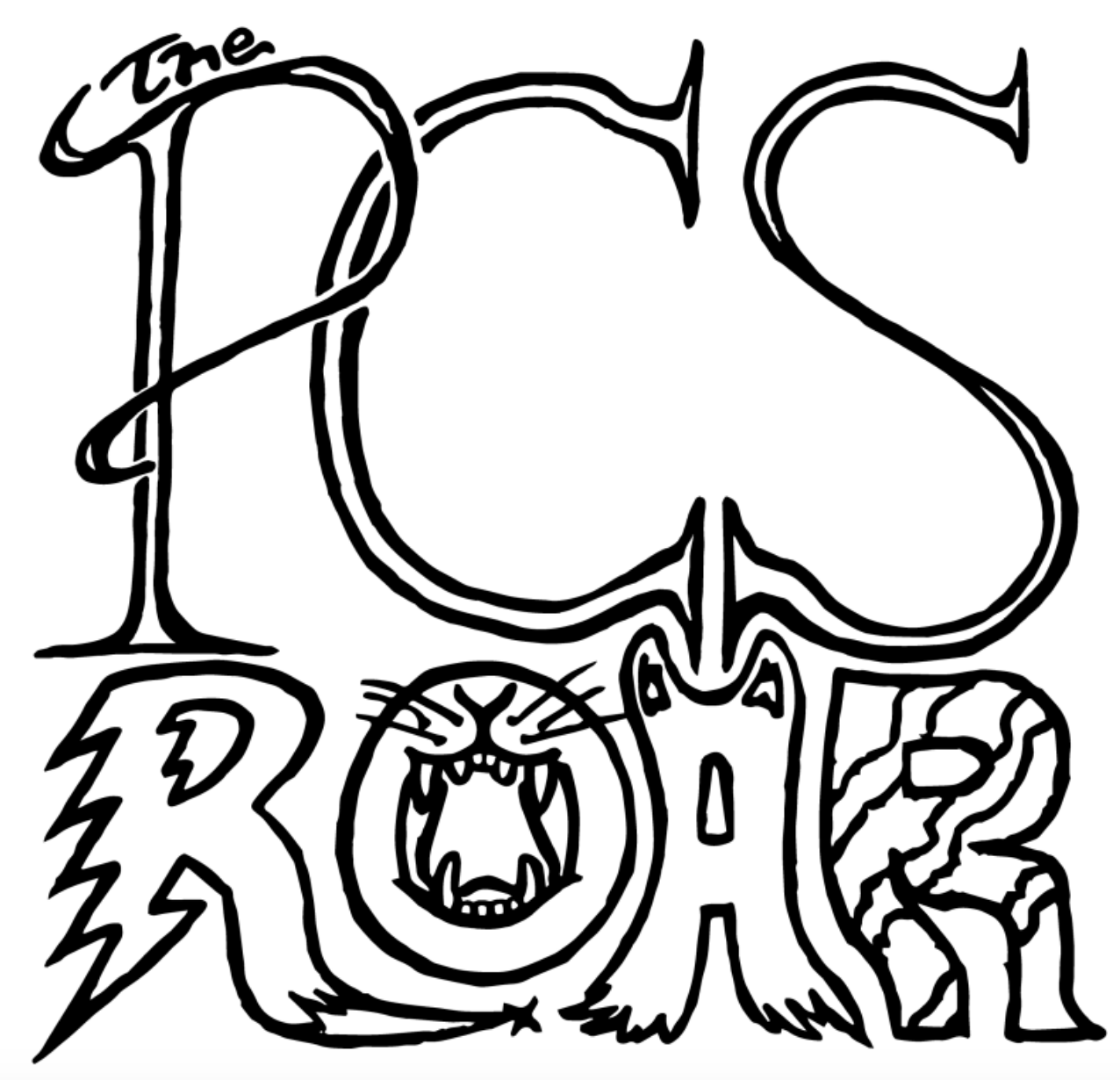Exploring the Wonders of Banana Peeling
March 27, 2023
“From the back, with your toes, like a monkey” – Gigi McPherson, 12th grade
In this article, we will finally answer the age-old question: how should one peel a banana? First, some banana anatomy: as PCS biology teacher Mr. Kyle Walters illustrated, the banana fruit grows from the base of a banana flower. The dark, nubby end of a banana is the end where the blossom used to be, and in this article we’ll refer to that end as the “blossom end”.

Now back to the peeling process. The majority (57%) of the PCS students and faculty we surveyed are Top Peelers: they peel the banana from the stem. Personally, we, your beloved reporters Tâm Lý and Ellen, identify with the Bottom Peelers, who make up 31% of the surveyed group. We peel bananas from the blossom end, and assert that this is the superior method. Last but not least, 11% are Alt Peelers: they prepare their bananas for consumption using other methods.
TOP PEELERS
First, the case for the majority opinion: Mateo Torrez (7th grade) says it’s just easier to peel from the top, and Rain Knight (8th grade) points out that the “bottom has a little goofy spot” that one would perhaps want to avoid. Chemistry teacher Mr. Wesley Winter adds, “If it’s not ripe enough, I’ll bite it at the top so it doesn’t pre-rip.”
However, Amber Waldo (11th grade) concedes, “Sometimes the top breaks and I have to do it from the bottom.” But when posed this possibility of top breakage, Kiana Bevan (12th grade) remains steadfast: “No,” that’s simply not a concern, “because I know how to peel a banana.”
BOTTOM PEELERS
The second-most popular method, and the one we believe superior, is peeling the banana from the blossom end. PCS junior Eleonore Schwarzmann says she’s always peeled from the bottom for as long as she can remember. Another Bottom Peeler recalls, “I was in Indonesia and [saw] this person was [peeling the banana from the bottom]… I’ve done it that way ever since.” But why is this the better method?
Most Bottom Peelers mentioned that this was the method that monkeys used, “and [monkeys] eat a lot of bananas, so they must be doing it right,” Choir and Performing Arts teacher Mr. Kyle Ball reasons. Unfortunately, we found that, contrary to the popular Monkey Defense, wild monkeys don’t eat bananas. The commercial bananas that we humans are used to don’t grow where monkeys live, and in fact, one zoo in England even banned the feeding of commercial bananas to their monkeys because the fruit is too high in sugar content (Harrington).
Even though our faction of bottom-peelers does not have the monkeys’ stamp of approval, there are yet many reasons why peeling bananas this way is functionally superior.
As Mr. Ball explains, peeling the banana from the blossom end is a way to get the “nut” out first, referring to the dark remnants of the banana blossom that we usually discard while eating (while no official name was found for this part, Urban Dictionary calls it the “bananus”). Moreover, in his experience, “by peeling it [from the blossom end], you get less of the strings,” (fun fact: those “strings” are phloem bundles that deliver nutrients through the fruit (Aiken)).
ALT PEELERS
Some people do not peel bananas from either the top or the bottom. For instance, several people mentioned using knives to cut off either the top or bottom at random. Additionally, Benson Young (11th grade) describes his process: “You know the part where it curves? You bend it and it kinda snaps a little,” and he peels it from that crack in the middle of the banana’s peel. Karen, a freshman, corroborates that she actually had a friend who used to go about her banana consumption in this way. Moreover, senior Owen Wiinikka said, “I don’t peel it, I just eat it.”
In fact, primate expert Katherine Milton says that if you handed a wild monkey a banana, they would probably just bite right into it (Streicher). Thus, the Monkey Method most closely resembles some combination of Owen and the Alt Peelers’ alleged alternative methods.
In conclusion, we find that there is clearly more concrete evidence to support the Bottom-Peeling method. We hope that after reading this report, you too will take the high road – or rather, the Bottom road – when it comes to banana peeling.
Sources:
Aiken, Kristen. “FYI, Those Annoying White Strings on Bananas Actually Have a Purpose.” HuffPost, HuffPost, 19 Jan. 2023, https://www.huffpost.com/entry/banana-strings-phloem-bundles_n_59356f67e4b0c242ca25e7f8.
Harrington, Rebecca. “Don’t Believe the Myth about Monkeys and Bananas.” Business Insider, Business Insider, 17 June 2016, https://www.businessinsider.com/wild-monkeys-do-not-eat-bananas-2016-6.
Streicher, Brad, and Rebecca Harrington. How to Peel Bananas. YouTube, 8 June 2016, https://youtu.be/P8svUCSuMS4?t=35. Accessed 14 Mar. 2023.

